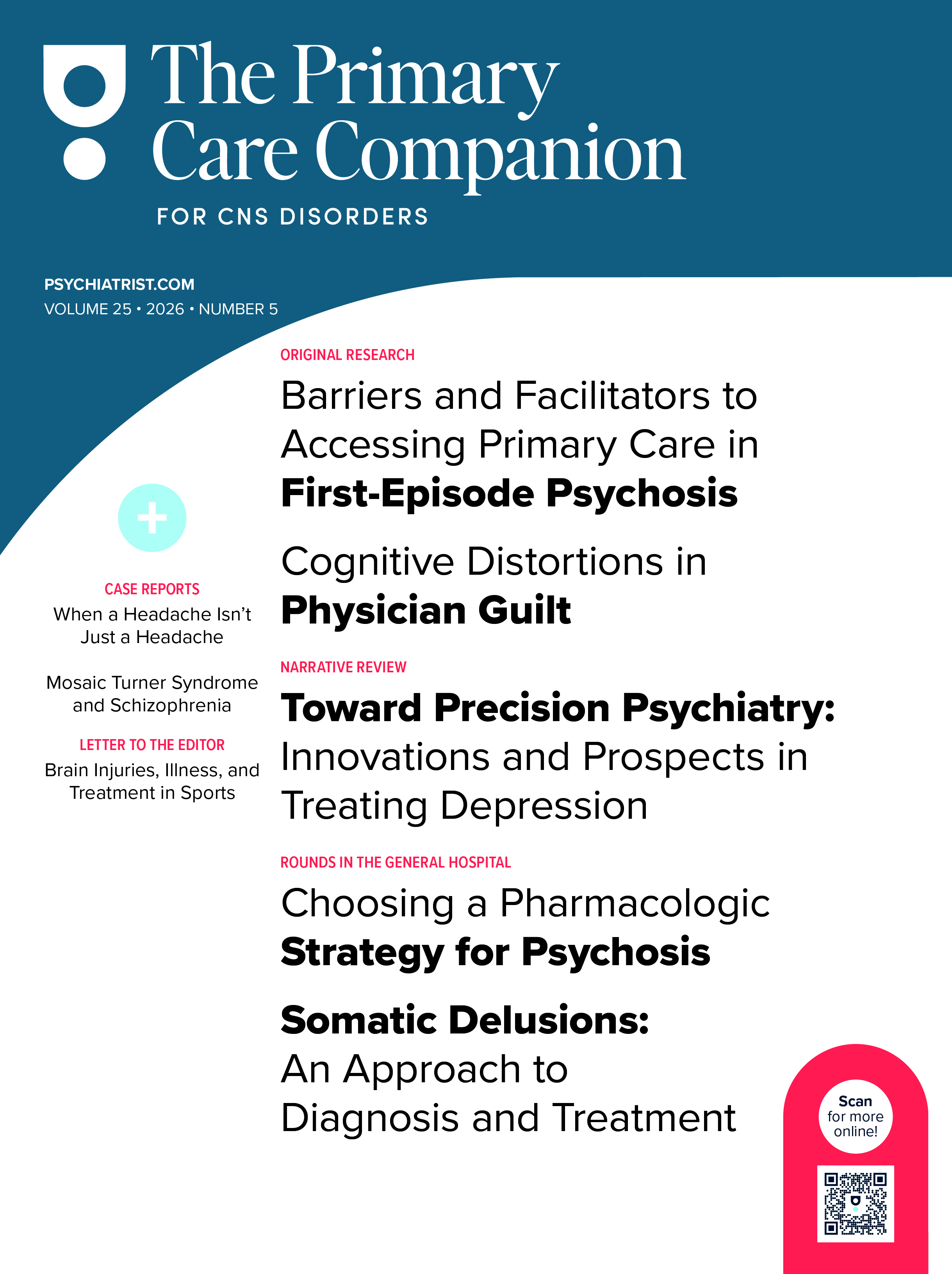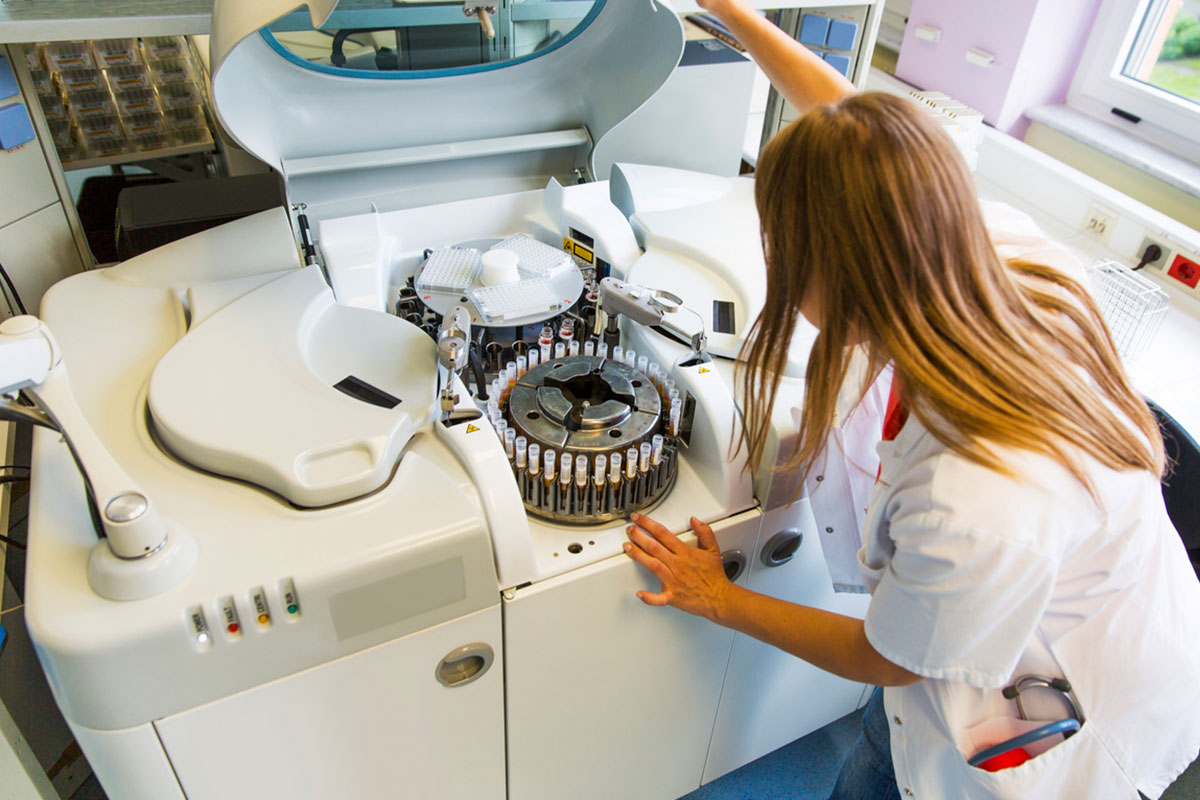Children and adolescents presenting to integrated primary care clinics with psychiatric issues can be quite complex and necessitate interdisciplinary collaboration. Nonetheless, when elevated psychosocial distress and safety concerns are most salient, emphasis may understandably be placed on emotional/behavioral factors.1,2 This can contribute to not recognizing underlying neurodevelopmental conditions, which may have a role in exacerbating mental health functioning. This case report describes a youth with longstanding psychotic illness, posttraumatic stress from adverse social experiences, and suicidality. Eventual understanding that his profile also comprised autism spectrum disorder led to tailored intervention strategies that served to mitigate psychiatric risk, enhance social communication skills, and ultimately foster greater resilience.
Case Report
A 14-year-old boy participated in an initial neuropsychiatric assessment. Family history was notable for severe psychopathology. Prenatal and birth histories were normal. As an infant, he was colicky and not as responsive to parents’ overtures compared to siblings. Fine and gross motor milestones progressed as expected, but speech was delayed. During the first 4 years of life, he exhibited intense temper tantrums, excessive crying, and problems playing with other children. He preferred to play alone but could become interactive with great effort from his parents. He had displayed inflexibility with changes in routine, need for a particular schedule, concrete thinking, sensory processing differences, repetitive body mannerisms, and fixated interests about which he would provide detailed information to others.
Social development suggested delays in reciprocity, nonverbal gestures, understanding of social nuance, nonliteral communication, and initiation/maintenance of friendships. He experienced significant bullying by peers at his former school and in his neighborhood—including teasing, exclusion, and physical aggression—leading to interpersonal withdrawal and decreased motivation. In late childhood, he endorsed auditory, visual, and tactile hallucinations, encompassing seeing a figure in a black coat, hearing whispers from a man, unfamiliar voices commenting negatively on his actions, hearing a little girl crying and asking for help, a woman screaming, and feeling things touching him that were not there. Delusions pertained to reading others’ minds, being watched by an unknown figure, and believing that he would relive events that have already taken place. Suicidal ideation with plan emerged in the context of these multifaceted stressors, for which psychiatric emergency intervention was required.3
Conceptualization synthesized discussion of developmental history with family, review of records, clinical interview, formal standardized neuropsychological and psychological test administration, and completion of rating scales.4 Collateral input was solicited among psychiatry, pediatrics, social work, and educational disciplines. His symptoms of psychosis, posttraumatic stress, and mood dysregulation including suicidality were confirmed via the evaluation. In addition, various sources of information highlighted the presence of autism spectrum disorder, beyond what would be expected from the negative symptoms of psychosis.5
Discussion
Autism spectrum disorder is exemplified by persistent deficits in social communication and interaction across multiple contexts, in addition to the presence of restricted, repetitive patterns of behavior, interests, or activities.6 The spectrum is vast and thus encompasses persons with/without accompanying intellectual impairment as well as with/without accompanying language impairment; there is high comorbidity with psychiatric symptoms. Risk for suicidal thoughts and behaviors is not uniform in youth referred for evaluation, and particular aspects of psychopathology must be considered in identification methods.2 Indeed, people on the autism spectrum are at higher risk for engaging in suicidal thoughts and behaviors, which may be subsequent to invalidating or unfulfilling relational encounters.7
Moreover, psychosis refers to the presence of certain features that alter an individual’s perceptions of, and interactions with, external reality. The hallmark symptomatology consists of delusions (rigid beliefs that are unlikely to be true, are maintained even if conflicting evidence is available, and usually seem irrational to others) and hallucinations (uncontrollable perceptual experiences in the absence of external stimuli). Disorganized thought patterns (ascertained from one’s speech), abnormal behaviors, and negative symptoms (eg, diminished emotional expression, amotivation, decreased speech output, anhedonia, low level of social involvement) may also be components of psychotic episodes.6,8 The association between childhood trauma and emergent psychosis has also been established,1 and in the case example, both were present.
Specific recognition of autism spectrum disorder altered the therapeutic approach across disciplines. Understanding how certain features of autism (eg, concrete thinking, social misunderstanding) might impact positive features of psychosis (eg, persecutory ideas of reference) was integral to subsequent treatment. Accordingly, holistic recommendations were provided for trauma-informed psychotherapy, psychopharmacology, social skills training, safety and medical monitoring, school accommodations, meditation, physical activity/nutrition, sleep hygiene, and other resources. Greater emphasis was placed on targeting pragmatic communication skills, reciprocity with peers, adaptive functions, reality testing and reasoning, school-based bullying intervention, and interpersonal approaches to mitigate depression
This case illustrates that, although risk assessment and safety planning are paramount, neurodevelopmental screening for potential attention, learning, language, and social delays must also occur at a reasonable juncture. Primary care providers are integral for early intervention, as well as in suggesting referrals for further monitoring as needed. A very detailed early childhood history is critical in forming accurate impressions, from which treatment will follow.9 Extant literature has suggested a shared neurodevelopmental origin for both autism and psychosis plus higher rates of comorbidity than in the general population; when the possibility is raised for either, a comprehensive assessment should rule out (or rule in) the other as well.10,11
Article Information
Published Online: November 25, 2025. https://doi.org/10.4088/PCC.25cr04022
© 2025 Physicians Postgraduate Press, Inc.
Prim Care Companion CNS Disord 2025;27(6):25cr04022
Submitted: June 14, 2025; accepted August 13, 2025.
To Cite: Capawana MR. Psychosis, posttraumatic stress, and suicidality obscure comorbid autism spectrum disorder: a report on differential diagnosis. Prim Care Companion CNS Disord 2025;27(6):25cr04022.
Author Affiliation: Department of Psychiatry, Massachusetts General Hospital/Harvard Medical School, Boston, Massachusetts.
Corresponding Author: Michael R. Capawana, PhD, ABPP, Department of Psychiatry, Massachusetts General Hospital/Harvard Medical School, 1 Bowdoin Square, 7th Floor Boston, MA 02114 ([email protected]).
Relevant Financial Relationships: None.
Funding/Support: None.
Patient Consent: Consent was received from the patient/guardians to publish the case report, and information has been de-identified to protect anonymity.
ORCID: Michael R. Capawana: https://orcid.org/0000-0003-0100-0881
References (11)

- Schäfer I, Fisher HL. Childhood trauma and psychosis -what is the evidence? Dialogues Clin Neurosci. 2011;13(3):360–365. PubMed
- Vuijk PJ, Bush HH, McGuinness PS, et al. Characteristics of child psychiatric outpatients at highest risk for suicidal thoughts and behaviors. Child Psychiatry Hum Dev. 2019;50(3):505–519. PubMed CrossRef
- Franklin JC, Ribeiro JD, Fox KR, et al. Risk factors for suicidal thoughts and behaviors: a meta-analysis of 50 years of research. Psychol Bull. 2017;143(2):187–232. PubMed CrossRef
- Bram AD, Peebles MJ. Psychological Testing that Matters: Creating a Road Map for Effective Treatment. American Psychological Association;2014. CrossRef
- Sheffield JM, Karcher NR, Barch DM. Cognitive deficits in psychotic disorders: a lifespan perspective. Neuropsychol Rev. 2018;28(4):509–533. PubMed CrossRef
- American Psychiatric Association. Diagnostic and Statistical Manual of Mental Disorders. 5th ed. American Psychiatric Association;2022. Text Rev.
- Reid M, Delgado D, Heinly J, et al. Suicidal thoughts and behaviors in people on the autism spectrum. Curr Psychiatry Rep. 2024;26(11):563–572. PubMed CrossRef
- Kleiger JH, Khadivi A. Assessing Psychosis: A Clinician’s Guide. Taylor & Francis;2015.
- Fitzgerald M. Schizophrenia and autism/Asperger’s syndrome: overlap and difference. Clin Neuropsychiatry. 2012;9(4):171–176.
- Larson FV, Wagner AP, Jones PB, et al. Psychosis in autism: comparison of the features of both conditions in a dually affected cohort. Br J Psychiatry. 2017;210(4):269–275. PubMed CrossRef
- Sullivan S, Rai D, Golding J, et al. The association between autism spectrum disorder and psychotic experiences in the Avon Longitudinal Study of Parents and Children (ALSPAC) birth cohort. J Am Acad Child Adolesc Psychiatry. 2013;52(8):806–814.e2. PubMed CrossRef
Please sign in or purchase this PDF for $40.





